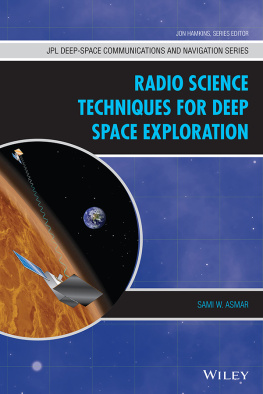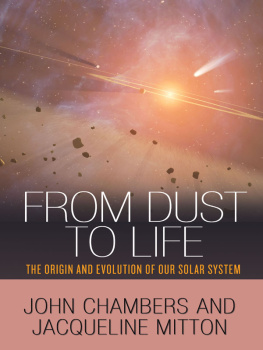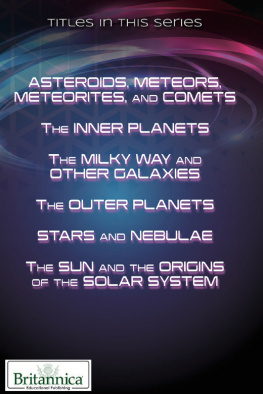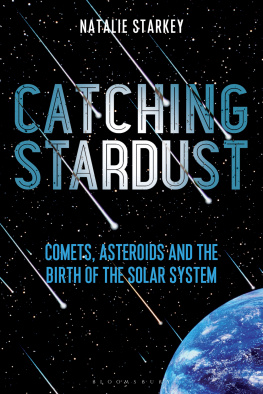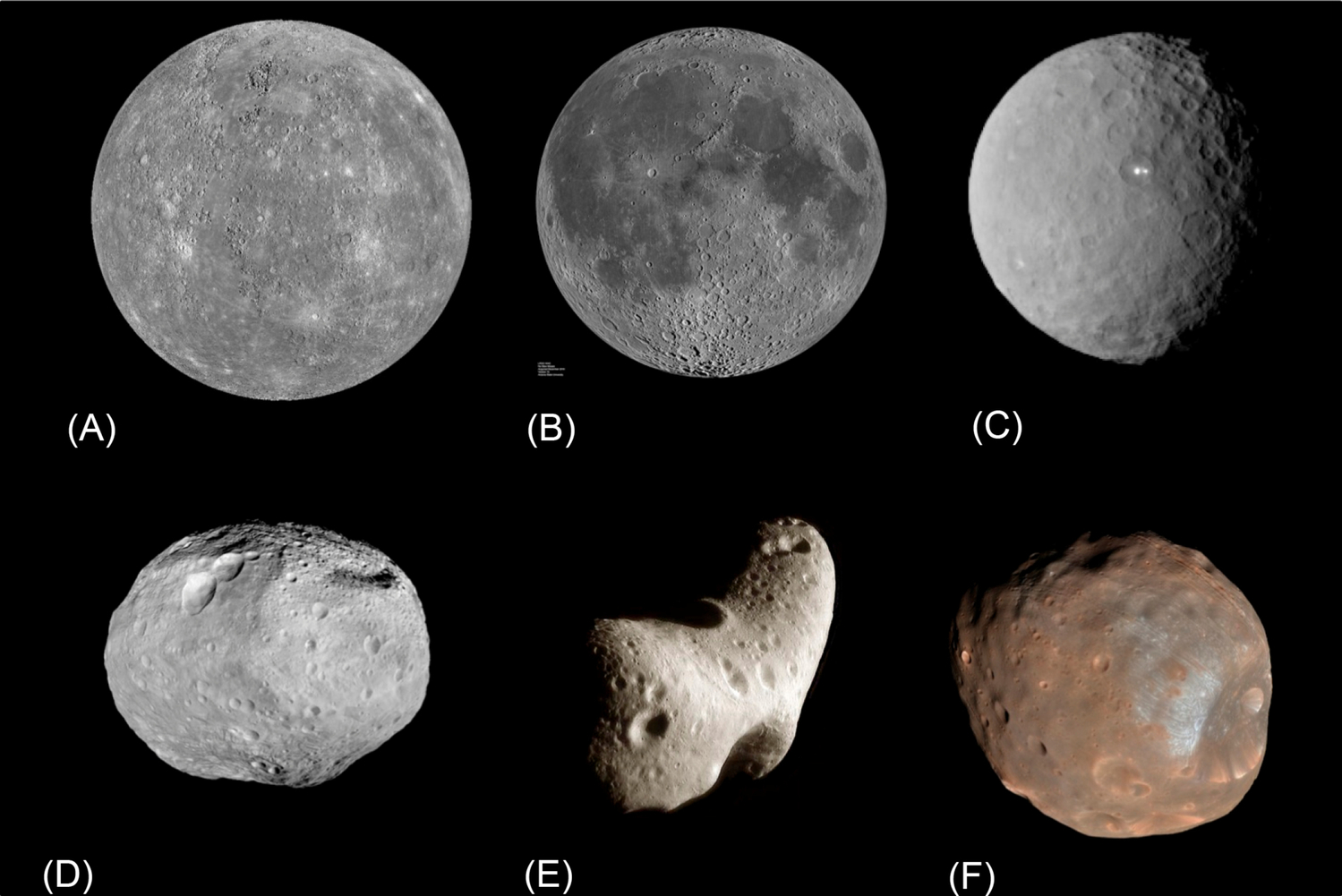Airless Bodies of the Inner Solar System
Understanding the Process Affecting Rocky, Airless Surfaces
First Edition
Jennifer A. Grier
Senior Scientist and Education and Communications Specialist, Planetary Science Institute, Columbia, MD, United States
Andrew S. Rivkin
Principal Professional Staff, Applied Physics Laboratory, Johns Hopkins University, Laurel, MD, United States

Copyright
Elsevier
Radarweg 29, PO Box 211, 1000 AE Amsterdam, Netherlands
The Boulevard, Langford Lane, Kidlington, Oxford OX5 1GB, United Kingdom
50 Hampshire Street, 5th Floor, Cambridge, MA 02139, United States
2019 Elsevier Inc. All rights reserved.
No part of this publication may be reproduced or transmitted in any form or by any means, electronic or mechanical, including photocopying, recording, or any information storage and retrieval system, without permission in writing from the publisher. Details on how to seek permission, further information about the Publishers permissions policies and our arrangements with organizations such as the Copyright Clearance Center and the Copyright Licensing Agency, can be found at our website: www.elsevier.com/permissions.
This book and the individual contributions contained in it are protected under copyright by the Publisher (other than as may be noted herein).
Notices
Knowledge and best practice in this field are constantly changing. As new research and experience broaden our understanding, changes in research methods, professional practices, or medical treatment may become necessary.
Practitioners and researchers must always rely on their own experience and knowledge in evaluating and using any information, methods, compounds, or experiments described herein. In using such information or methods they should be mindful of their own safety and the safety of others, including parties for whom they have a professional responsibility.
To the fullest extent of the law, neither the Publisher nor the authors, contributors, or editors, assume any liability for any injury and/or damage to persons or property as a matter of products liability, negligence or otherwise, or from any use or operation of any methods, products, instructions, or ideas contained in the material herein.
Library of Congress Cataloging-in-Publication Data
A catalog record for this book is available from the Library of Congress
British Library Cataloguing-in-Publication Data
A catalogue record for this book is available from the British Library
ISBN: 978-0-12-809279-8
For information on all Elsevier publications visit our website at https://www.elsevier.com/books-and-journals

Publisher: Candice Janco
Acquisition Editor: Marisa LaFleur
Editorial Project Manager: Katerina Zaliva
Production Project Manager: Maria Bernard
Cover Designer: Mark Rogers
Typeset by SPi Global, India
Acknowledgments
We would like to acknowledge the contributions of friends and colleagues who helped us see this book from conception to reality. They generously contributed their time to help make this a better book. In particular we would like to mention Drs. Nancy Chabot, Brett Denevi, Josh Emery, and Rachel Klima, who agreed to interviews about their areas of expertise; Drs. Dave Blewett, Tom Burbine, Carolyn Ernst, Christine Hartzell, Angela Stickle, and Kevin Walsh, who provided comments on chapters; and Dr. Jamie Molaro who supported us both via an interview and via edits.
We recognize that the contents of a textbook are by its nature designed to showcase and build upon the work of myriad researchers in our community. We acknowledge the decades of effort that we have drawn upon to produce this work. While we do not call out individuals in this section, the References and Additional reading sections at the end of each chapter give a flavor of the breadth and diversity of thought on these topics.
We are grateful for the opportunity to write this book, which has expanded our own appreciation of the subject matter and changing paradigms around the surface processes of rocky, airless bodies.
Chapter 1
Introduction
Abstract
Our views of the solar system are ever changing. As observations are made, and data are collected, new ideas come to light. Old paradigms shift and change into the visions of the future. This ongoing process requires planetary scientists to continually re-evaluate their perceptions of the solar system in order to move the field forward. Exploration and investigation of a wide variety of bodies has caused a similar shift in the way we view rocky, airless surfaces. The scientific returns from missions such as Dawn (Vesta/Ceres), LRO (Moon), Hayabusa (Itokawa), and MESSENGER (Mercury) along with other data sets have created a new conception of the common processes that affect their surfaces. Such new conceptions are helping us understand the places we have not sent dedicated missions, such as Phobos and Deimos and untold small asteroids. Airless Bodies in the inner solar system have become a class of objects unto themselves.
Keywords
Exploration; Investigation; Observations; Spacecraft; Airless bodies
Contents
Motivation
Our views of the solar system are ever changing. As observations are made, and data are collected, new ideas come to light. Old paradigms shift and change into the visions of the future. This ongoing process requires planetary scientists to continually re-evaluate their perceptions of the solar system in order to move the field forward.
Exploration and investigation of a wide variety of bodies has caused a similar shift in the way we view rocky, airless surfaces. The scientific returns from missions such as Dawn (Vesta/Ceres), LRO (Moon), Hayabusa (Itokawa), and MESSENGER (Mercury) along with other data sets have created a new conception of the common processes that affect their surfaces. Such new conceptions are helping us understand the places we have not sent dedicated missions, such as Phobos and Deimos and untold small asteroids. Airless Bodies in the inner solar system have become a class of objects unto themselves.
While a fuller story of the exploration of the rocky, airless bodies will unfold throughout this book, it is clear that the last two decades have seen a deluge of new data from in situ missions as well as telescopic observations (). Our moon has seen several visitors from the United States, Japan, India, and China, including orbiters, impactors, a lander, and a rover. NASA's Lunar Reconnaissance Orbiter (LRO) has operated since 2009 and continues to return detailed images and data from its instruments. China's ChangE series of missions are building toward an anticipated far side sample return in coming years. India's Chandrayaan-1 orbiter was one of three missions to cooperatively return widely accepted evidence that water and/or hydroxyl (OH in minerals) is present on the lunar surface, while NASA's LCROSS impactor exhumed material thought to contain polar ice.


